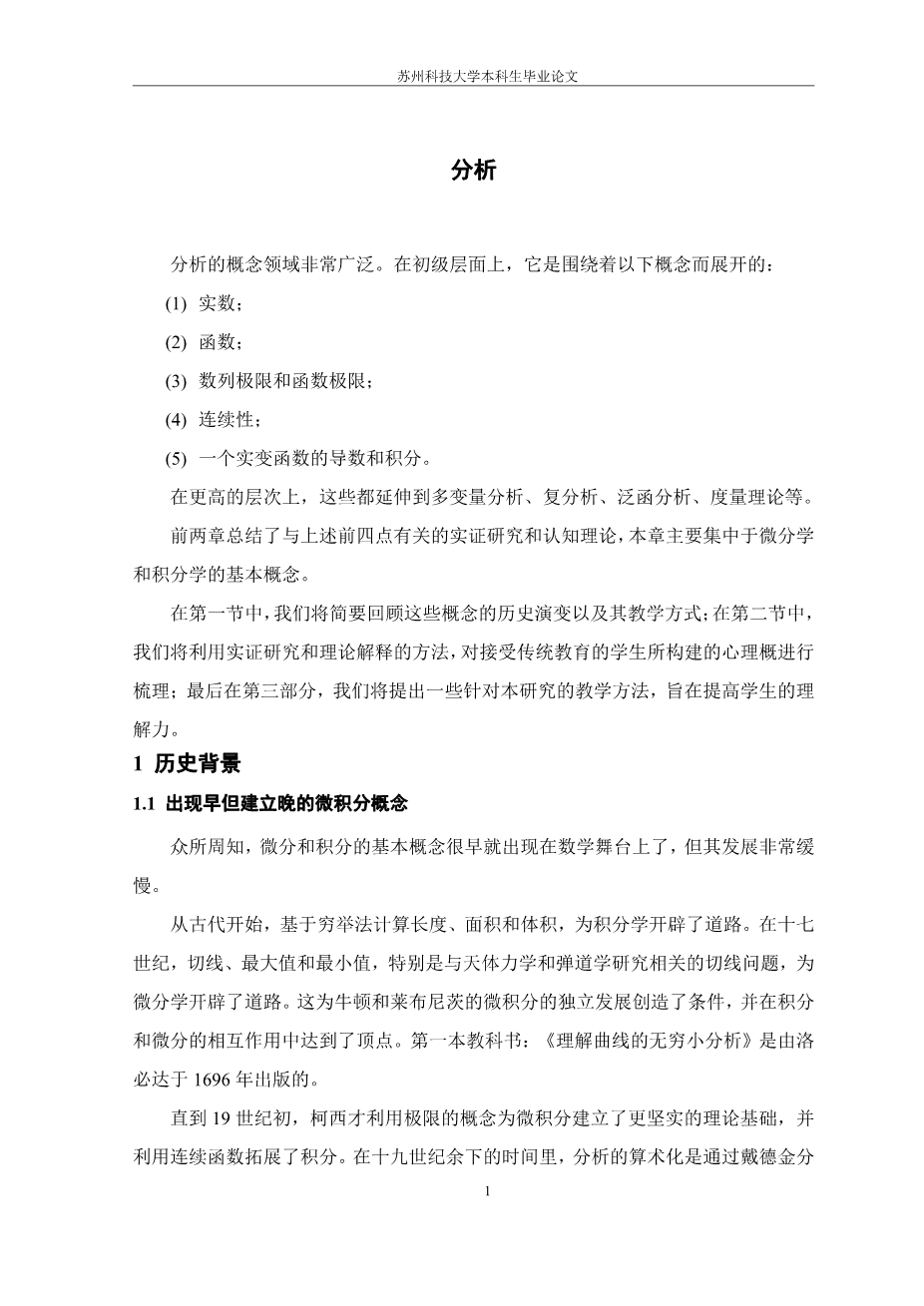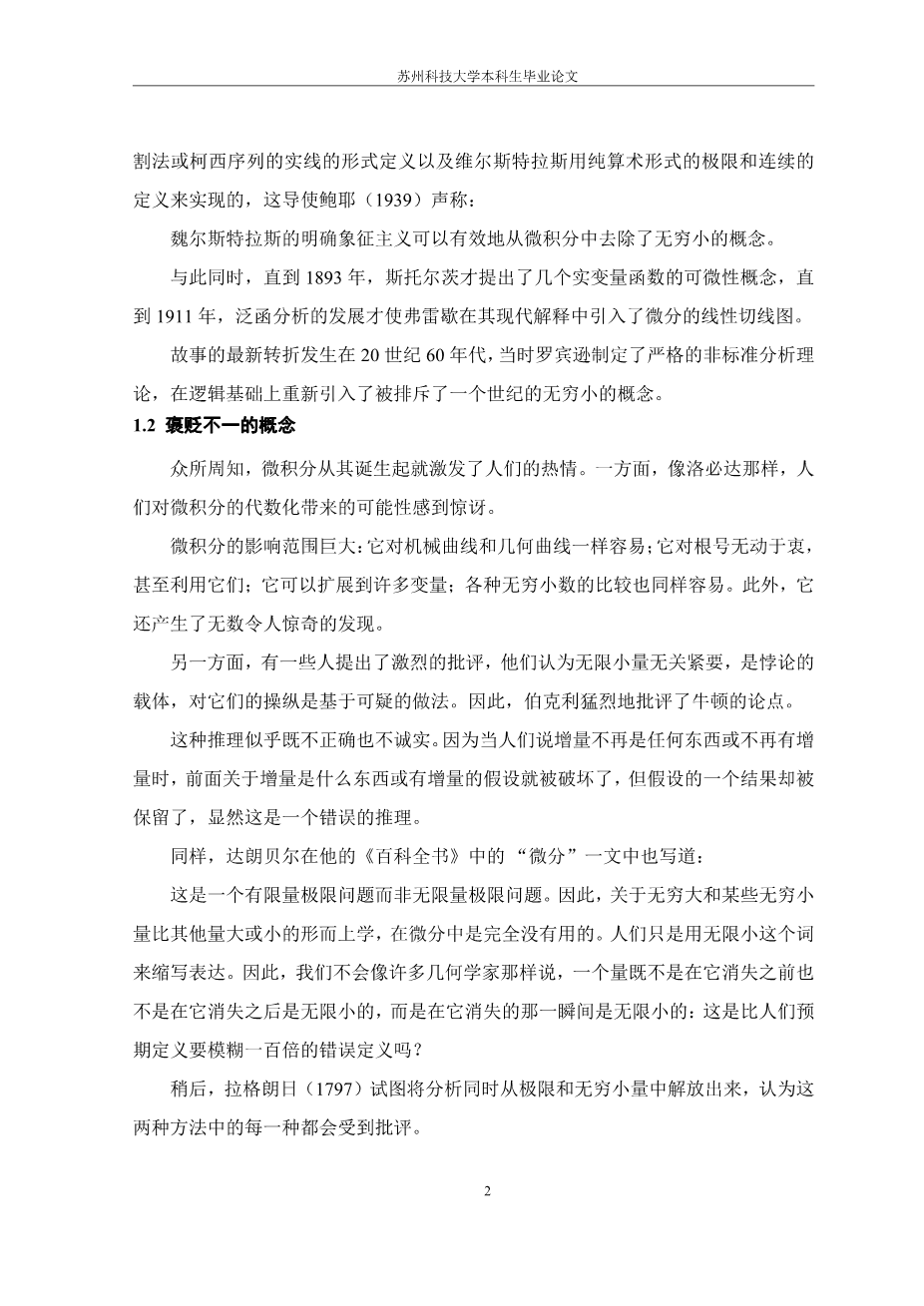Analysis
The conceptual field of analysis is vast. At the elementary level it is structured around the notions of:
- real number,
- function,
- limits of numerical sequences and functions,
- continuity,
- the derivative and integral of functions of one real variable.
At more advanced levels these extend to analysis of several variables, complex analysis, functional analysis, measure theory and so on.
The two preceding chapters have summarized empirical research and cognitive theory relating to the first four of these headings. This chapter concentrates on the smaller body of work focussing on the fundamental notions of differential and integral calculus.
In the initial section we will briefly review major points in the historical evolution of the concepts and the ways that they have been taught. In the second we will use empirical research and theoretical interpretations to draw up a catalogue of the mental conceptions constructed by students engaged in traditional education. Finally, in the third, we will present some instructional treatments taking this research into account and designed to improve student understanding.
Historical Background
1.1 Some Concepts Emerged Early But Were Established Late
It is well known that the fundamental notions of differential and integral calculus appeared on the mathematical scene very early, but their development was very slow.
From the time of antiquity, calculations of length, ara and volume, based on the method of exhaustion, opened the way to integral calculus. In the seventeenth century, the problems of tangent, maxima and minima, linked in particular to the study of celestial mechanics and ballistics in their turn opened the way to differential calculus. This set the scene for the independent development of the calculus by Newton and Leibniz, culminating in the reciprocity of the operations of integration and differentiation. The first text-book: Analysis of the infinitely small for understanding curved lines was published by the Marquis de lrsquo;Hospital (l696).
It was not until the beginning of the nineteenth century that Cauchy developed a firmer theoretical basis for the calculus using the notion of limit, and integration was developed using continuous functions. In the remainder of the nineteenth century the arithmetization of analysis was carried out, through formal definitions of the real line by Dedekind cuts or Cauchy sequences, and formal definitions of limits and continuity using methods in a purely arithmetic form by Weierstrass. This led Boyer (1939) to claim:
the unequivocal symbolism of Weierstrass may be regarded as effectively banishing from the calculus the persistent notion of infinitesimal.
Meanwhile, it was not until 1893 that Stolz introduced the notion of differentiability for functions of several real variables and only in 1911 that the development of functional analysis led to Freacute;chet introducing the differential in its modem interpretation in terms of linear tangent maps.
The latest twist in the story occurred in the 1960s, when Robinson formulated a rigorous theory of non-standard analysis, reintroducing infinitesimals on a logical basis after a century of rejection.
1.2 Some Concepts Cause Both Enthusiasm and Virulent Criticism
It is well known that from its birth, infinitesimal calculus has excited passions. On the one hand there is the enthusiasm of those who, like the Marquis de lrsquo;Hospital, are astonished by the possibilities opened up by the algebraisation of calculus:
The extent of calculus is immense: it is as easy for mechanical curves as for geometrical ones; it is indifferent to radical signs and even makes use of them; it extends to as many variables as one would wish; comparisons of all kinds of infnitesimals are equally easy. Furthermore, an infinity of surprising discoveries has come out of it. (preface to de lrsquo;Hospital 1696)
On the other there is virulent criticism from those for whom infinitesimals are beings without roles, carriers of paradoxes, the manipulations of which are based on dubious practices. Thus Berkeley fiercely criticizes the arguments of Newton:
This reasoning seems neither correct nor honest. For when one says that increments are no longer anything or that there are no more increments, the preceding supposition to the effect that increments were something or that there were increments is destroyed, yet a consequence of the supposition is retained... This is a false reasoning.
Likewise, Drsquo;Alembert wrote (in his article “Differential” in the Encyclopedie Methodique):
It is not at all a question of how one speaks ordinarily of infinitesimal quantities in differential calculus: it is just a question of limits of finite quantities. Thus the metaphysics of infinity and some infinitesimal quantities being larger or smaller than others, is totally useless in differential calculus. One only uses the term infinitesimal to abbreviate expressions. We would not say therefore, as do many geometers, that a quantity is infinitely small neither before it vanishes nor after it is vanished, but in the very instant at which it vanishes: for wouldnrsquo;t that mean a very false definition, a hundred times more obscure than that which one wishes to define?
A little later Lagrange (1797) would attempt to liberate analysis simultaneously from both limits and infinitesimals, judging each of the two approaches to be as subject to criticism as the other.
1.3 The Differential/Derivative Conflict and Its Educational Repercussions
At the heart of these differences of opinion is the differential/derivative conflict,originally a debate between the English school using Newtonrsquo;s fluxions and the continental school using the dif
剩余内容已隐藏,支付完成后下载完整资料


英语译文共 8 页,剩余内容已隐藏,支付完成后下载完整资料
资料编号:[588253],资料为PDF文档或Word文档,PDF文档可免费转换为Word
您可能感兴趣的文章
- 饮用水微生物群:一个全面的时空研究,以监测巴黎供水系统的水质外文翻译资料
- 步进电机控制和摩擦模型对复杂机械系统精确定位的影响外文翻译资料
- 具有温湿度控制的开式阴极PEM燃料电池性能的提升外文翻译资料
- 警报定时系统对驾驶员行为的影响:调查驾驶员信任的差异以及根据警报定时对警报的响应外文翻译资料
- 门禁系统的零知识认证解决方案外文翻译资料
- 车辆废气及室外环境中悬浮微粒中有机磷的含量—-个案研究外文翻译资料
- ZigBee协议对城市风力涡轮机的无线监控: 支持应用软件和传感器模块外文翻译资料
- ZigBee系统在医疗保健中提供位置信息和传感器数据传输的方案外文翻译资料
- 基于PLC的模糊控制器在污水处理系统中的应用外文翻译资料
- 光伏并联最大功率点跟踪系统独立应用程序外文翻译资料



